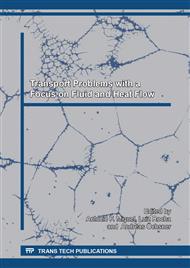p.31
p.39
p.48
p.58
p.64
p.73
p.83
p.108
p.124
A Design-Variable-Based Computational Study on the Unsteady Internal-Flow Characteristics of the Urea-SCR Injector for Commercial Vehicles
Abstract:
This study conducted a computational analysis on the characteristics of the unsteady internal flow of the Urea-SCR injector using reverse engineering. The flow coefficient that changed according to time was calculated, and the flow-coefficient data from the injector-needle movement were secured. To objectively compare the responsiveness of the injector, the time taken by the flow-coefficient number to change in the injector-needle rise interval and to reach 80 % of the mean flow coefficient was indexed. The design variables of the injector, nozzle angles, and the number of nozzles were selected to analyze the effect on the mean flow coefficient and the total injection quantity. The study results indicate that the effect of the nozzle angles on the total injection quantity per time is insignificant, but when the number of nozzles was excessively increased, the total injection quantity per time was decreased. The characteristic changes of the initial flow coefficient of the increased needle regarding the injector-nozzle angle and the nozzle number were analyzed as the characteristics of the injector responsiveness. This analytic result is used as the basic material for the design of the injector.
Info:
Periodical:
Pages:
64-72
Citation:
Online since:
November 2017
Authors:
Keywords:
Price:
Сopyright:
© 2017 Trans Tech Publications Ltd. All Rights Reserved
Share:
Citation:


